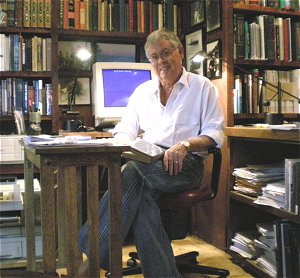McCoy’s Ford
October 1862
Twenty days after the battle of Antietam, General Lee had his army positioned near Bunker Hill, on Opequon Creek. McClellan’s army was positioned on the left bank of the Potomac from about Harper’s Ferry westward to Williamsport. Lee’s army was positioned at Bunker Hill on the Opequon.
On October 10th, Lee sent Stuart on a mission of reconnaissance, the purpose of which was to scout the Cashtown Gap, between Chambersburg and Gettysburg, and the terrain between the east entrance to the gap and Gettysburg. Lee was already thinking of the road net that converged on Gettysburg as the means of meeting the enemy in an encounter battle.
Stuart, with a cavalry force of about 1,800 men and several pieces of artillery, went by way of Hedgesville to McCoy’s Ford, where he crossed the Potomac into Maryland and headed in a roundabout way for Chambersburg.Along the way, Stuart seized as many horses as he could find, giving each trooper two, if not three mounts, and went through the Cashtown Gap into the open country beyond, coming within sight of Gettysburg. Then he turned south to Fairfield, passed through Emmittsburg and looped down through Maryland to the Potomac. His force traveled about 65 miles in 24 hours. Reaching White’s Ford, he encountered a regiment of Union troops, raced through them and forded the river without loss.
Overflight of McCoy’s Ford 
Maryland side Virginia Side 
Map of Stuart’s Route 

From Chambersburg, Stuart passed through the Cashtown Gap and turned toward Fairfield, passing through Cashtown and Orwanta. 



The discipline of historians is not geared to fact-finding; they read an historical document as if it were the final expression of truth. Rarely do they compare what a witness wrote or said, or is reported to have said, with what the evidence demonstrates the actors actually did. The idea that a reasonable person in Lee’s shoes would allow his cavalry commander to wander off on a lark with 1,800 men and horses, expose them to the exertion of an exhausting march through enemy territory, for no purpose other than to burn a bridge or terrorize a town for an hour or so, would never be accepted by a jury in a courtroom.
The process of trial lawyers, in their presentation of probative evidence, pro and con, highlighted by their contrary arguments, in persuading the jury to their respective points of view, ensures that the jury focuses its deliberation precisely upon what the jurors would expect a reasonable person, under the circumstances shown by the evidence, would do. Here General Lee must have had an intelligent military reason for sending Stuart on such a dangerous mission, for the danger of being destroyed by McClellan’s pursuit was very real. The only reasonable explanation, given the known circumstances, and in light of Lee’s subsequent actions, is that Lee wanted intelligence about the Cashtown Gap where eventually he intended to place for a number of days over fifty thousand of his troops, and intelligence about the nature of the ground between Cashtown and Gettysburg. That ground extends for eight miles. It is rolling farmland. The perfect ground for a battle, as long as the enemy could be drawn deep into it. Lee knew he would be drawing his army toward the Rappanhannock as soon as McClellan began moving, and took advantage of the down time to gain the intelligence which he would take into consideration in the following months, as he planned the battle of Gettysburg. |
Joe Ryan

|
Joe Ryan Original Works @ AmericanCivilWar.com |
|||||||||||||||||||||||||||||||||||||||||||||||||||||||||||||||||||||||||||||||||||||||||||||||||||||||||||||||||||||||||||||||||||||||||||||||||||||||||||||||||||||||||||||||||||||||||||||||||||||||||||||||||||||||||||||||||||||||||||||||||||||||||||||||||||||||||||||||||||||||||||||||||||||||||||||||||||||||||||||||||||||||||||||||||||||||||||||||||||||||||||||||||||||||||||||||||||||||||||||||||||||||||||||||||||||||||||||||||||||||||||||||||||||||||||||||||||||||||||||||||||||||||||||||||||||||||||||||||||||||||||||||||||||||||||||||||||||||||||||||||||||||||||||||||||||||||||||||||||||||||||||||||||||||||||||||||||||||||||||||||||||||||||||||||||||||||||||||||||||||||||||||||||||||||||||||||||||||||||||||||||||||||||||||||||||||||||||||||||||||||||||||||||||||||||||||||||||||||||||||||||||||||||||||||||||||||||||||||||||||||||||||||||||||||||||||||||||||||||||||||||||||||||||||||||||||||||||||||||||||||||||||||||||||||||||||||||||||||||||||||||||||||||||||||||||||||||||||||||||
|
About the author: Joe Ryan is a Los Angeles trial lawyer who has traveled the route of the Army of Northern Virginia, from Richmond to Gettysburg several times. |
||||||||||||||||||||||||||||||||||||||||||||||||||||||||||||||||||||||||||||||||||||||||||||||||||||||||||||||||||||||||||||||||||||||||||||||||||||||||||||||||||||||||||||||||||||||||||||||||||||||||||||||||||||||||||||||||||||||||||||||||||||||||||||||||||||||||||||||||||||||||||||||||||||||||||||||||||||||||||||||||||||||||||||||||||||||||||||||||||||||||||||||||||||||||||||||||||||||||||||||||||||||||||||||||||||||||||||||||||||||||||||||||||||||||||||||||||||||||||||||||||||||||||||||||||||||||||||||||||||||||||||||||||||||||||||||||||||||||||||||||||||||||||||||||||||||||||||||||||||||||||||||||||||||||||||||||||||||||||||||||||||||||||||||||||||||||||||||||||||||||||||||||||||||||||||||||||||||||||||||||||||||||||||||||||||||||||||||||||||||||||||||||||||||||||||||||||||||||||||||||||||||||||||||||||||||||||||||||||||||||||||||||||||||||||||||||||||||||||||||||||||||||||||||||||||||||||||||||||||||||||||||||||||||||||||||||||||||||||||||||||||||||||||||||||||||||||||||||||||||
Battle of Gettysburg
General Robert E. Lee
General JEB Stuart
General Jubal Early
Confederate Commanders
General Joseph Hooker
Union Generals
American Civil War Exhibits
State Battle Maps
Civil War Timeline
Women in the Civil War




